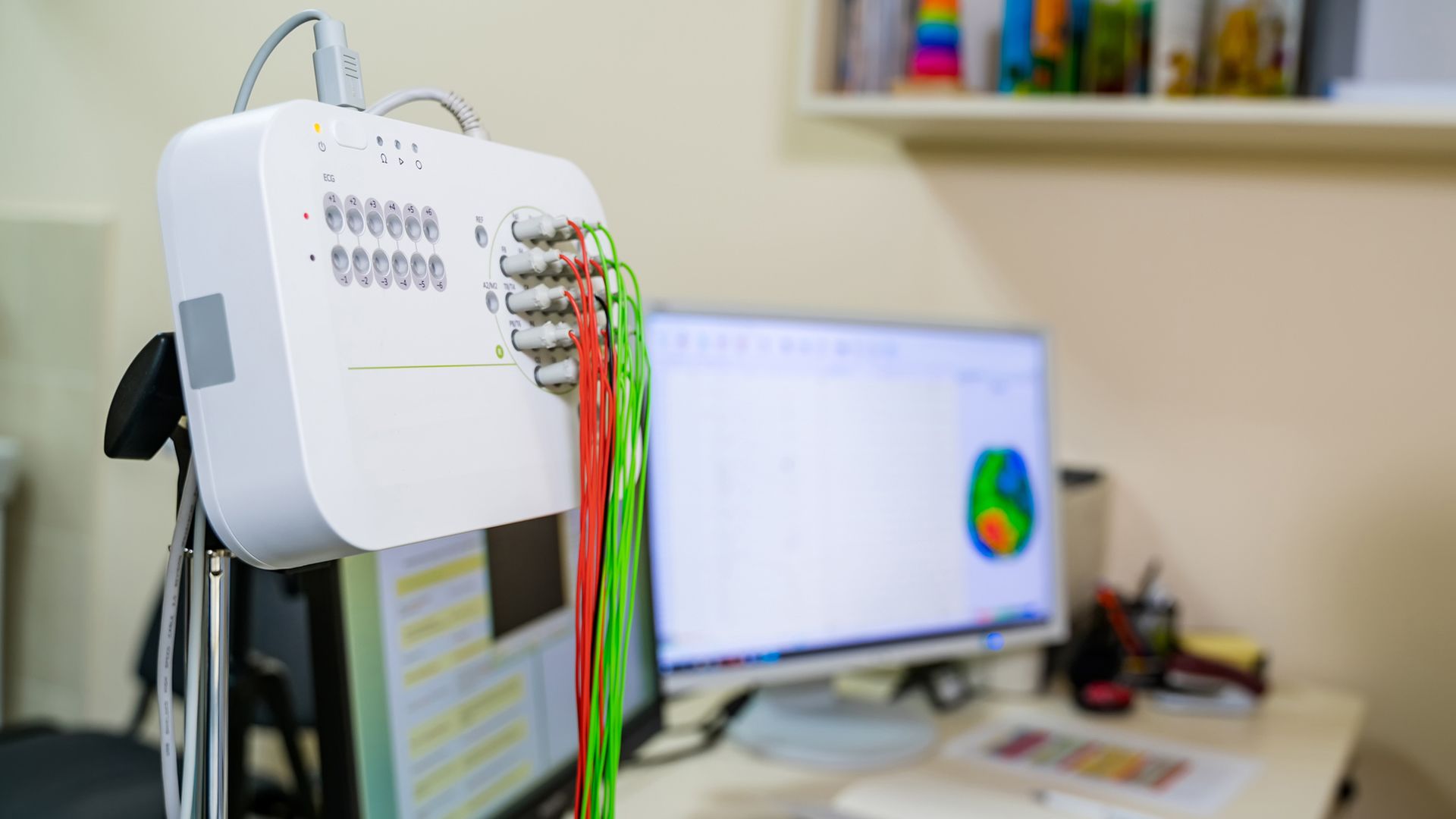Things we don’t fully understand may seem mysterious, even frightening. If you’ve ever seen an actor pretending to have a seizure on TV, for example, you might assume that all seizures involve uncontrolled jerking movements. Not so.
Seizures, dubbed “electrical storms” in your brain, do cause sudden, uncontrollable bursts of electrical activity. But the outward symptoms they produce depend on the type of seizure and the part of the brain that’s involved.
You may have also heard that someone who is having a seizure needs to have their tongue held down to prevent them from swallowing it. The reality? Doing so could actually be dangerous.
Meanwhile, you might assume that anyone who experiences a seizure has epilepsy. Think again.
Dispelling common misconceptions about seizures—and learning the facts about epilepsy—can help make these conditions seem less scary. Doing so can also provide some reassurance to people who have them.
“There are plenty of treatments out there that can help you lead a normal life,” says Kathleen Wiese, DO, a neurologist at Trident Medical Center in North Charleston, South Carolina.
Myth: Seizures always cause dramatic convulsions.
When you hear the word seizure, you may picture of a person writhing on the floor, foaming at the mouth, and losing consciousness. In fact, most seizures are much more subtle than that, according to the National Institutes of Health.
About sixty percent of people with epilepsy have focal seizures, which begin in one area of the brain. As a result, the symptoms of these seizures tend to be less dramatic. (Generalized seizures begin in both halves of the brain at the same time.)
The most common focal seizures involve the temporal lobe, the part of the brain that processes your emotions and short-term memory, Dr. Wiese explains. These seizures are often associated with auras, odd sensations or movements in the early stage of a seizure that warn of a more serious one in the near future.
People experiencing aura may develop nausea, unusual sense of smell or taste, or déjà vu, the sense that something’s familiar even though you’ve never experienced it before. Some people also exhibit unusual, repetitive behaviors called automatisms, including blinking, twitching, walking in circles, or making certain mouth movements, such as chewing or swallowing.
Occipital lobe seizures, on the other hand, are focal seizures that occur in the back of the brain and affect vision. They can trigger a range of symptoms from temporary blindness or visual hallucinations to eye pain.
The frontal lobe, situated in the front of the brain, is the largest brain region. Because it serves many important functions, seizures involving this part of the brain often produce unusual symptoms that may seem to be related to psychiatric disorders or sleep problems. Seizures here often occur during sleep.
It’s important to understand that a small focal seizure can spread to other parts of the brain, leading to a generalized seizure, Wiese points out. These are the seizures that typically present with “classic” symptoms, such as loss of consciousness, violent shaking, disrupted breathing, tongue biting, and loss of bladder control.
Note: Most seizures do not require immediate medical attention, but you should call 911 if a seizure has one or more of these characteristics:
- The seizure lasts longer than 5 minutes
- The person having the seizure has never had one before
- The person having the seizure is having trouble breathing or waking up after the seizure
- The person has another seizure immediately after the first one
- The person is injured during the seizure
- The seizure occurs while the person is in water
- The person having a seizure has a health condition like heart disease or diabetes or is pregnant
Myth: People might swallow their tongue during a seizure.
Rest assured, it’s physically impossible to swallow your tongue. The tongue is a large muscle rooted to the throat and the base of the mouth by large ligaments, Wiese notes. It is possible, though, for you to injure your tongue if you unintentionally bite it during a seizure. This can result in swelling that can obstruct your airway. When this happens, anything else placed inside your mouth could make it even harder for you to breathe.
“This is why you should never place a spoon or a finger or any other foreign object into the mouth during a seizure,” Wiese advises. “You can fully block the airway doing this and kill someone.”
If you are witnessing someone having a seizure, you can also help them by doing the following:
- Ease them to the floor.
- Turn them gently onto one side. (This will help them breathe.)
- Remove anything hard or sharp from the area around the person to help prevent injury.
- Put something soft and flat, like a blanked or folded piece of clothing, under their head.
- Remove their eyeglasses.
- Loosen scarves or ties or anything tied around the neck.
Myth: Seizures always happen unexpectedly.
It’s true that seizures are unpredictable, and you often don’t know when or where they may occur. But some people may experience a prodrome, certain feelings or changes in behavior in the hours or days leading up to a seizure that could serve as a warning. Common symptoms of prodrome include headache, confusion, anxiety, and irritability.
Anyone who recognizes these warning signs or is concerned that they might have a seizure should seek immediate medical attention. Rescue treatment, including anti-seizure medications, or benzodiazepines such as diazepam (Valium) or lorazepam (Ativan), may be prescribed.
Prodrome shouldn’t be confused with aura, which is the early phase of a focal seizure that’s associated with certain sensations such as nausea, unusual sense of taste or smell, and behaviors such as walking in circles or blinking. A person’s aura symptoms tend to be similar each time they have a seizure.
If you experience frequent seizures without warning, consider adopting a service dog, Wiese suggests. These animals are specially trained to detect and alert people to subtle changes in their behavior, which may be an early sign of seizure. Some dogs bark while others may lie next to someone having a seizure to prevent injury, or even activate a pre-programmed alarm device.
Myth: Having a seizure means you have epilepsy.
All seizures warrant evaluation by a doctor but having a seizure does not necessarily mean that someone has epilepsy. By definition, epilepsy means having two or more unprovoked seizures. There are many possible health issues that can lead to epilepsy—including brain damage, certain genetic conditions, stroke, infection that affects the brain, and a brain tumor—but the exact cause of about half of all epilepsy cases is unclear.
People who use cocaine are also at higher risk for seizures, even if they’ve never had one before. Alcoholics can also have seizures if they stop drinking cold turkey, Wiese points out. Known as alcohol withdrawal seizures, these events occur within six to 48 hours of your last drink.
Certain medications—such as certain painkillers, antidepressants, and antibiotics—can also trigger seizures, but this happens very rarely. Anyone prescribed medication should discuss their individual risk for side effects, including seizures, with their healthcare provider (HCP).
Myth: Epilepsy is rare.
It’s actually one of the most common conditions affecting the brain. In the United States alone, 1.2 percent of people have epilepsy, according to the Centers for Disease Control and Prevention (CDC). This means that 3.4 million Americans—including 470,000 children—live with epilepsy.
Myth: Epilepsy is a disabling disease.
It’s true that there are some jobs, like flying an airplane, or some sports, like scuba diving, that are off-limits for those with epilepsy. But for the most part, people with epilepsy live full, successful lives.
“People whose seizures are well-controlled can function in most any profession, and have normal family, work, and social lives,” Wiese says. There are a number of medications currently available to treat epilepsy, many of which have very tolerable side effect profiles, she adds.
If your seizures are completely controlled by your antiepileptic medicines, you usually don’t need a safety plan, according to the Epilepsy Foundation. But if you’re still at risk for seizures, your employer is legally required to make modifications.
Certain employees, for example, may be given approval to use a car service instead of driving a car while traveling for work. Other accommodations in the workplace for those who experience seizures may include installing carpeting to cushion seizure-related falls, being situated in an office located a safe distance from stairs, and avoiding shift work or overnight hours, which can lead to sleep loss, a possible seizure trigger.
When it comes to physical activity, you can play most sports safely. Keep in mind, though, that while engaging in certain activities such as swimming, it’s a good idea to go with a buddy.
Myth: Lifestyle changes won’t help stop seizures.
There’s actually quite a lot you can do in your daily life to help.
Since bright, flashing lights can also be a seizure trigger, you can take some preventive steps. Use polarized or tinted glasses outdoors, rely on natural lighting when indoors as much as possible, and use a screen filter on your computer monitor and take frequent breaks from the screen.
When you watch television, do so in a well-lit room to reduce the contrast between light from the screen and light in the room. Reduce the brightness of the screen, sit as far from the screen as you can, and generally avoid watching for long periods of time.
Stress is a commonly reported seizure trigger. Try to ease stress and anxiety by sticking to a healthy routine, such as getting regular exercise, practicing yoga, tai chi, or Pilates or trying some relaxation and controlled breathing techniques. Speak to you HCP if you need help developing effective strategies to cope with stress.
Sleep deprivation and dehydration can also trigger seizures. It’s important to take steps to make sure you drink enough water and get enough rest. Talk to your HCP if you’re having trouble nodding off. The Epilepsy Foundation also recommends drinking alcohol only in moderation or avoiding it entirely.
For some people who don’t respond to medication, a modified form of the trendy keto diet (a high-fat, low-carb style of eating), has been shown to reduce seizures, particularly in children, says Wiese.
It’s important to understand that this diet is very restrictive. So, you’ll need to make sure your neurologist and other members of your healthcare team are on board with it. The diet also needs to be followed very carefully, and you should be carefully monitored by a dietitian while following it. In some cases, adults have success with a modified version of the Atkins diet, which may be easier for some people to follow.





